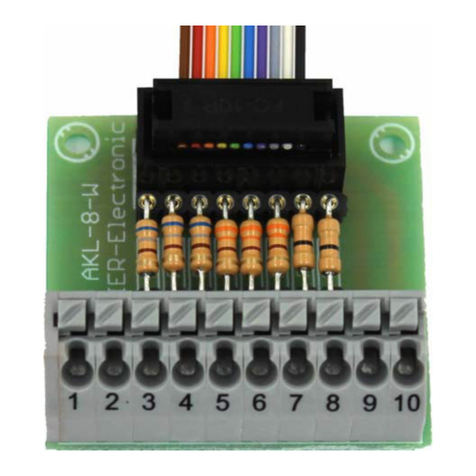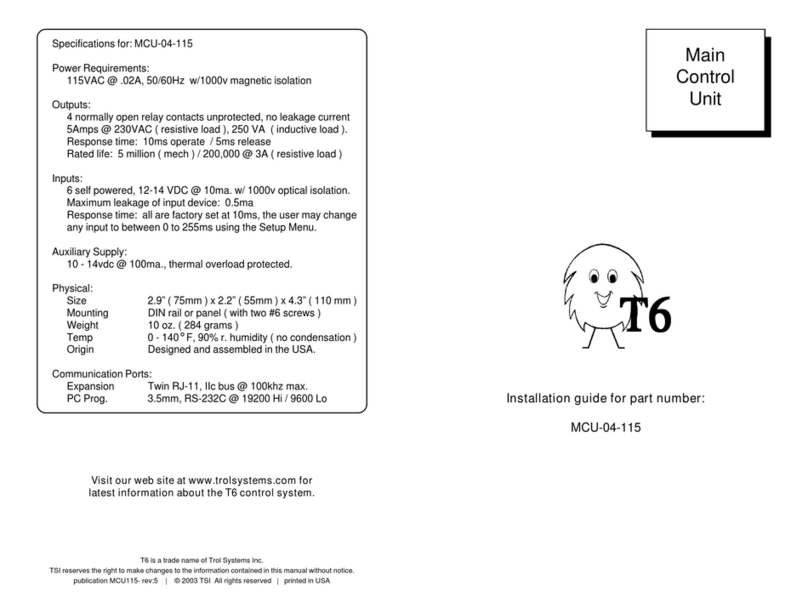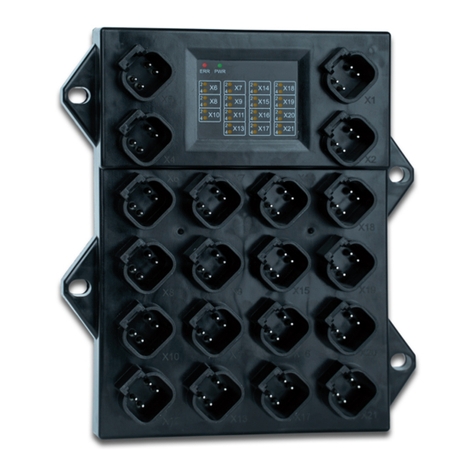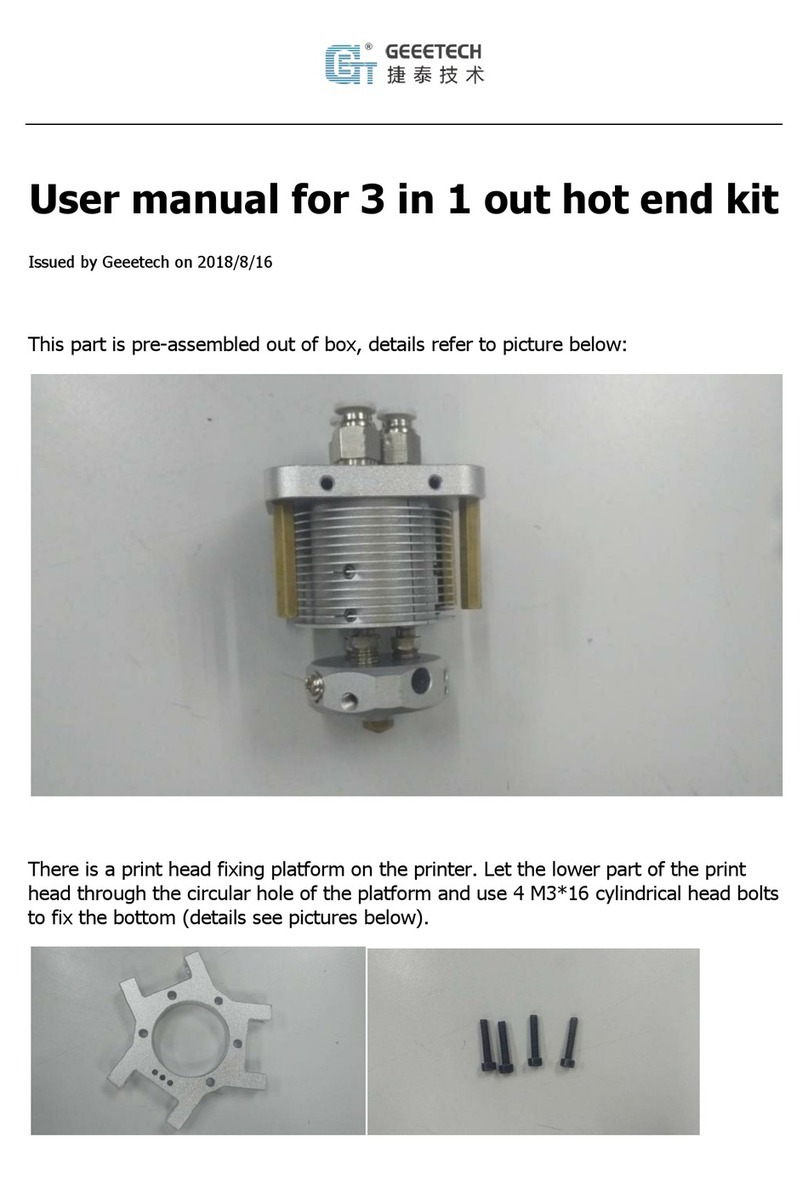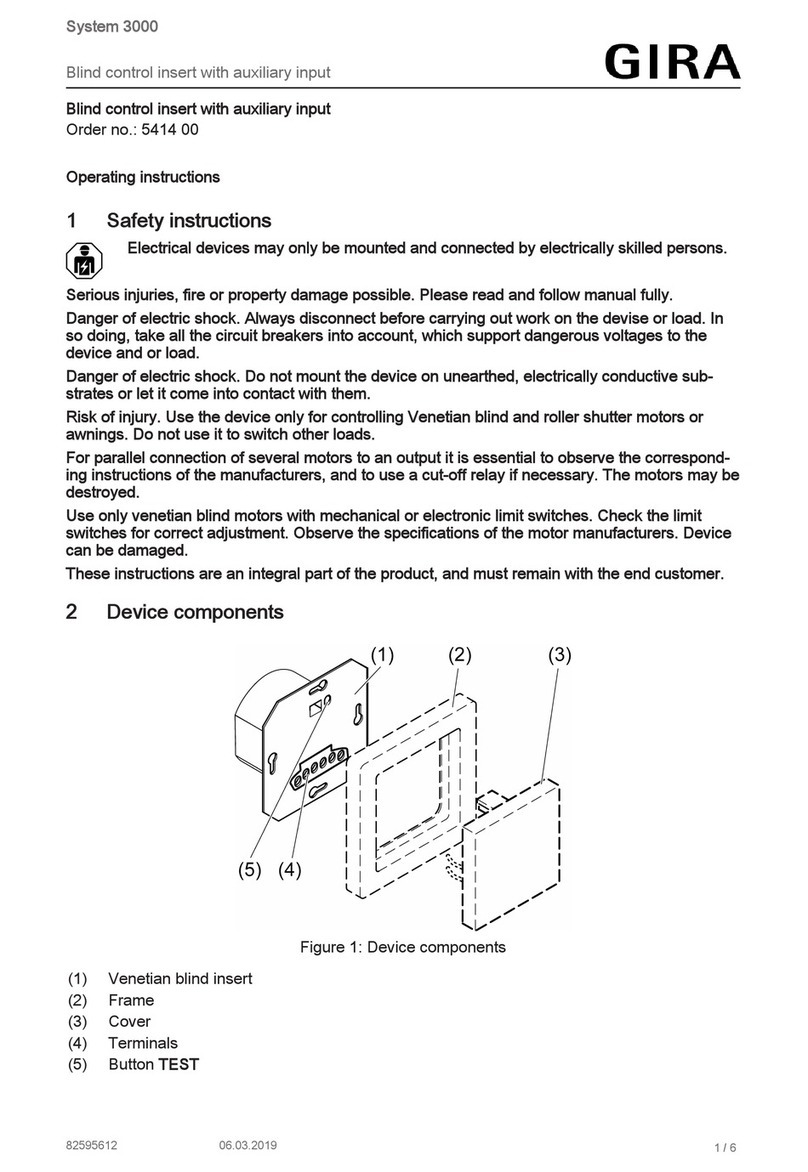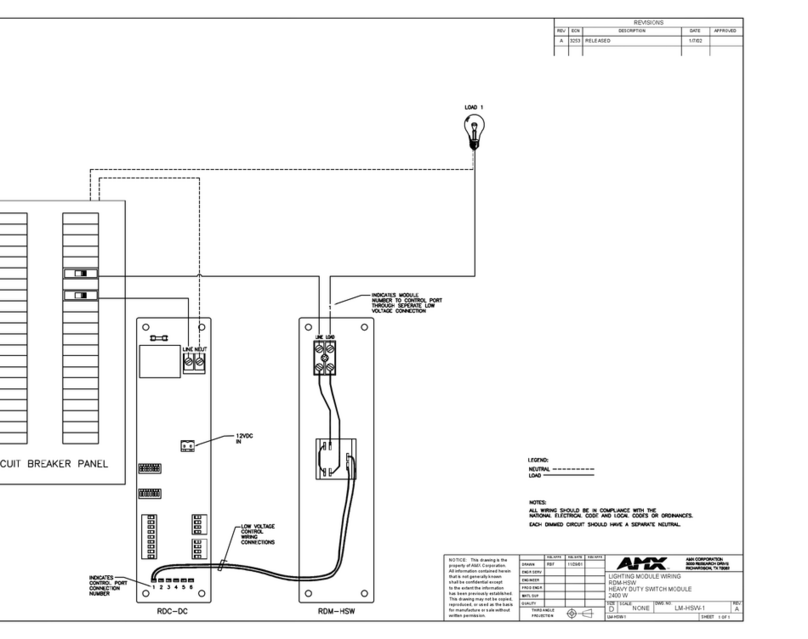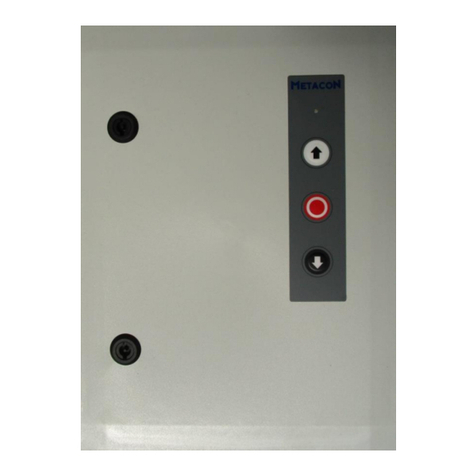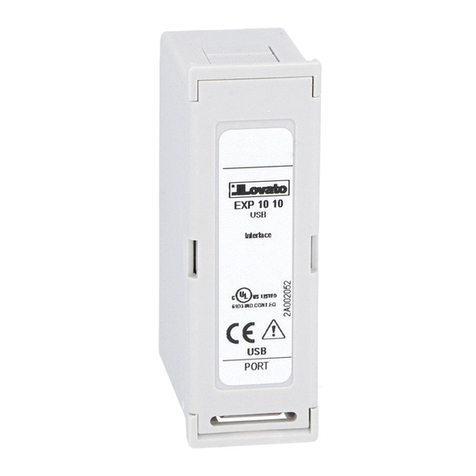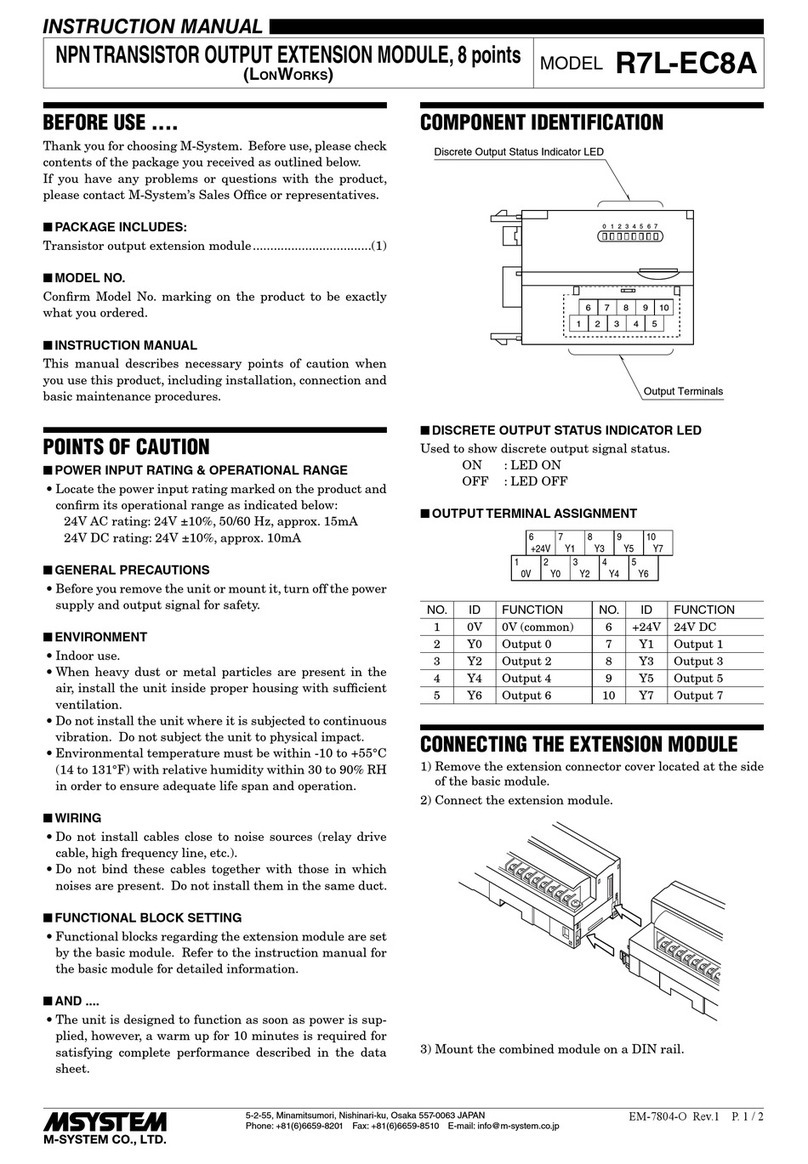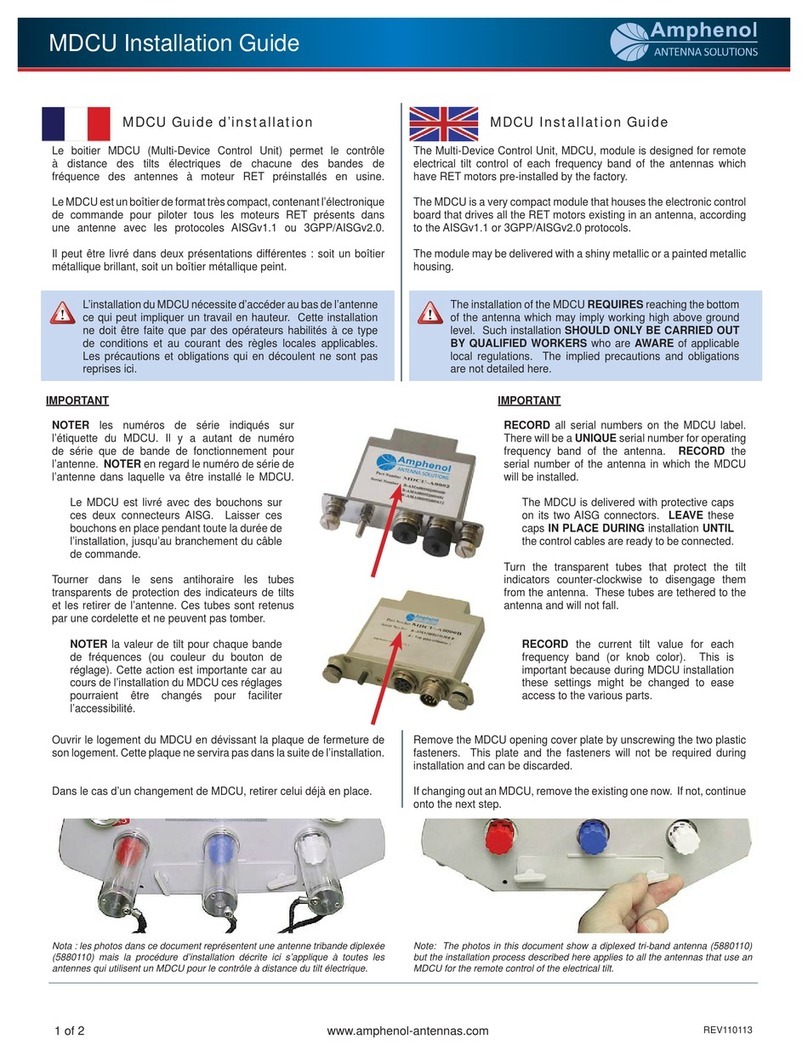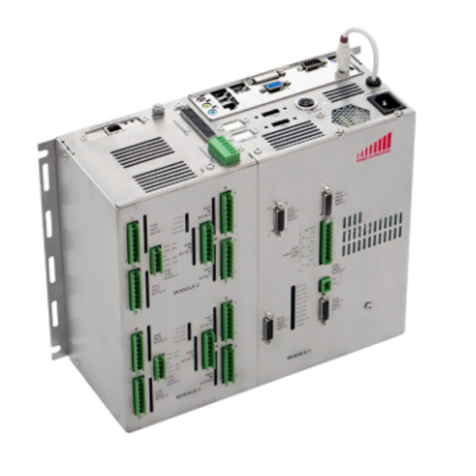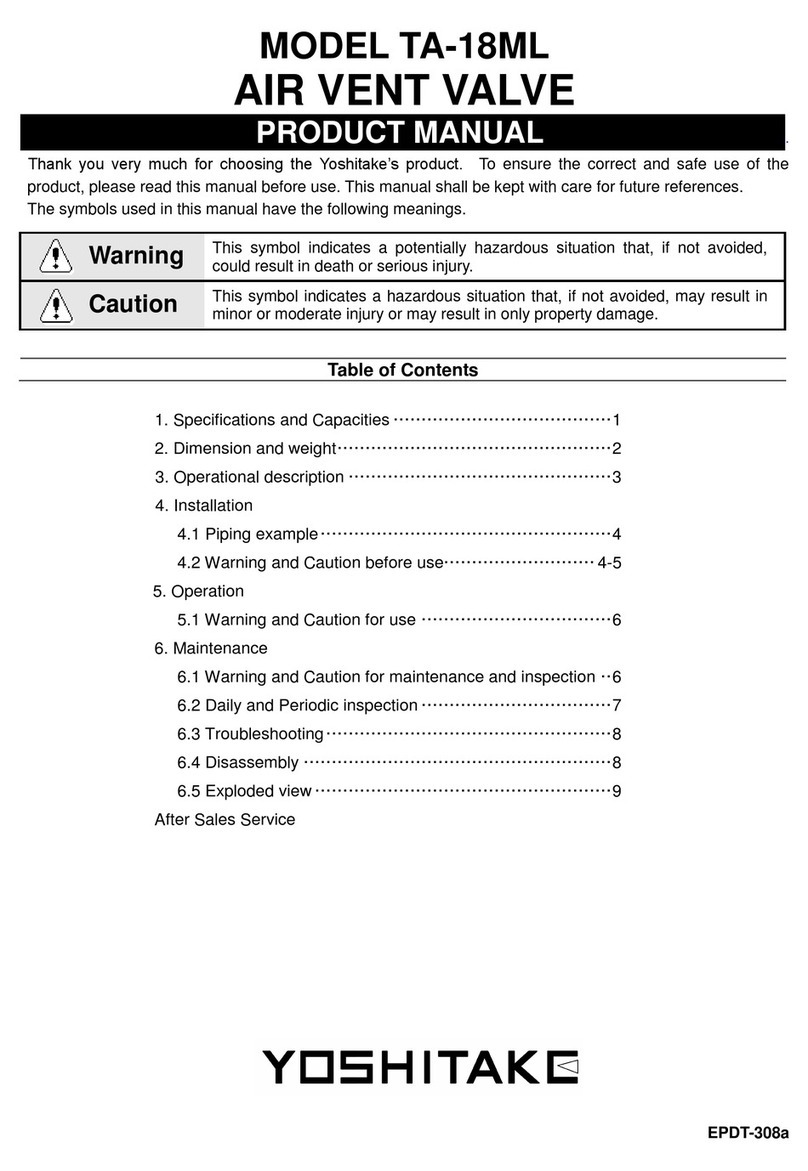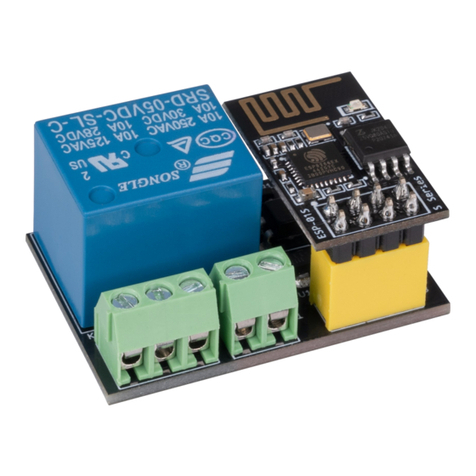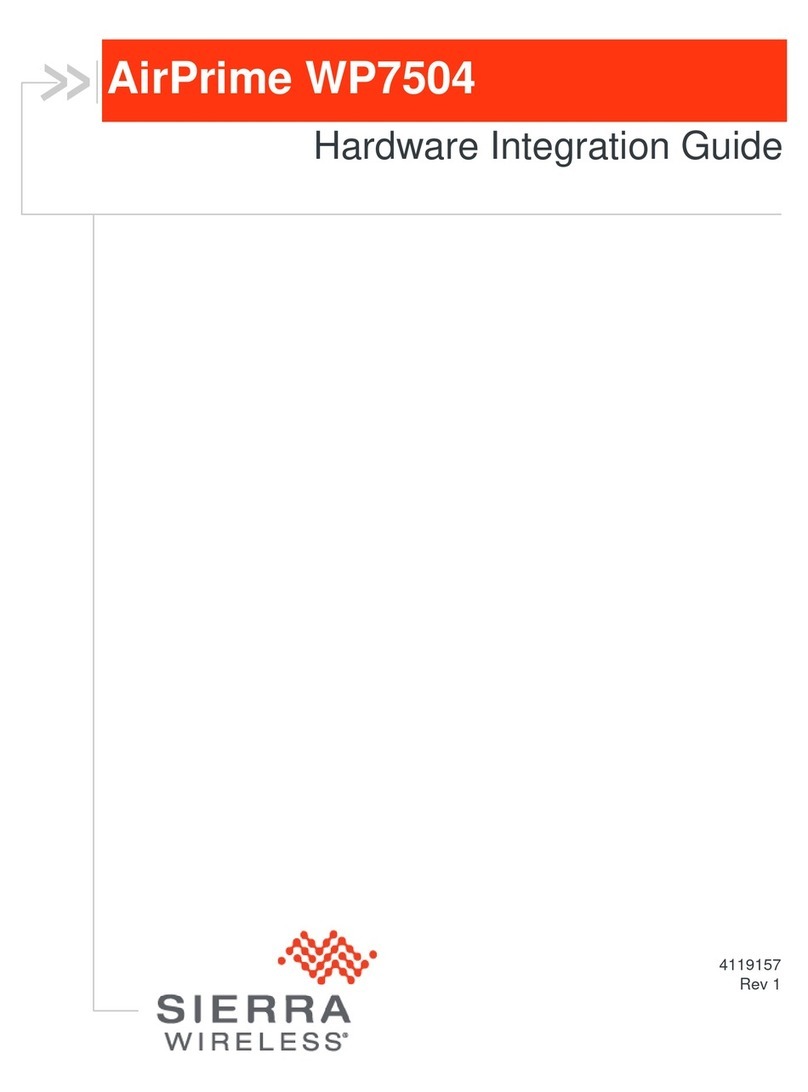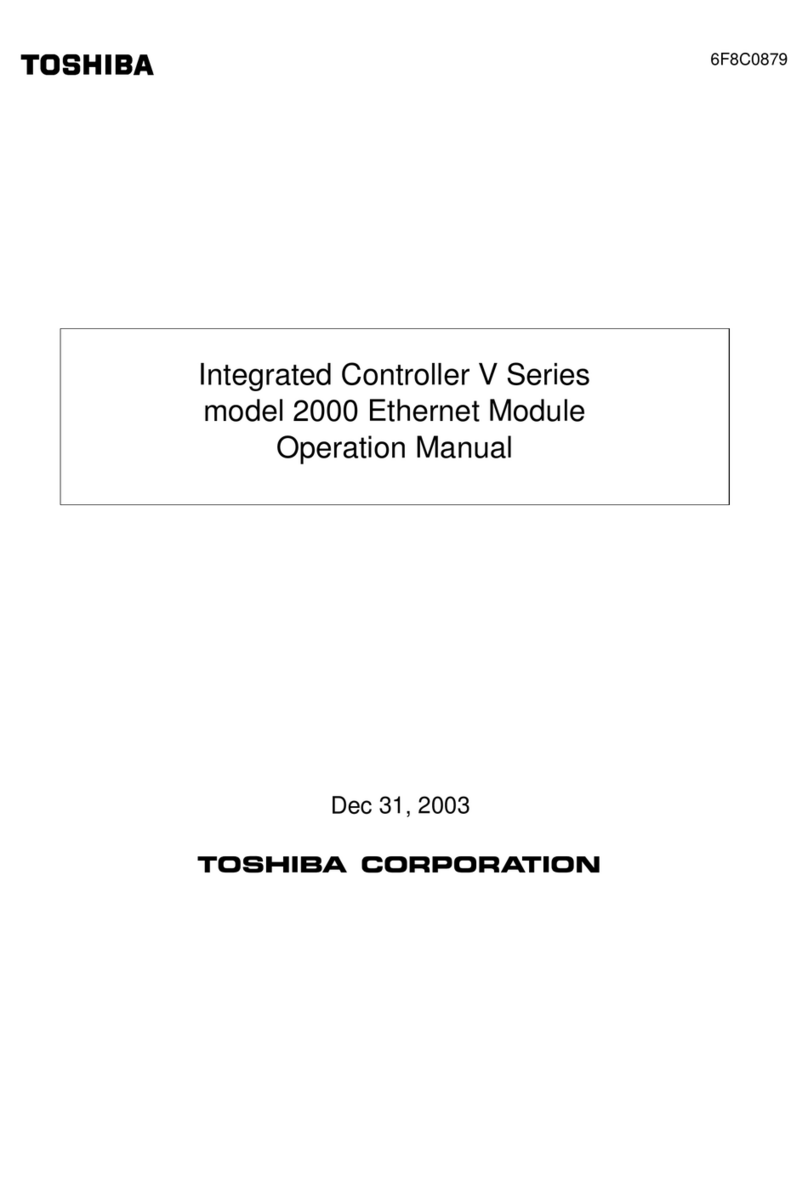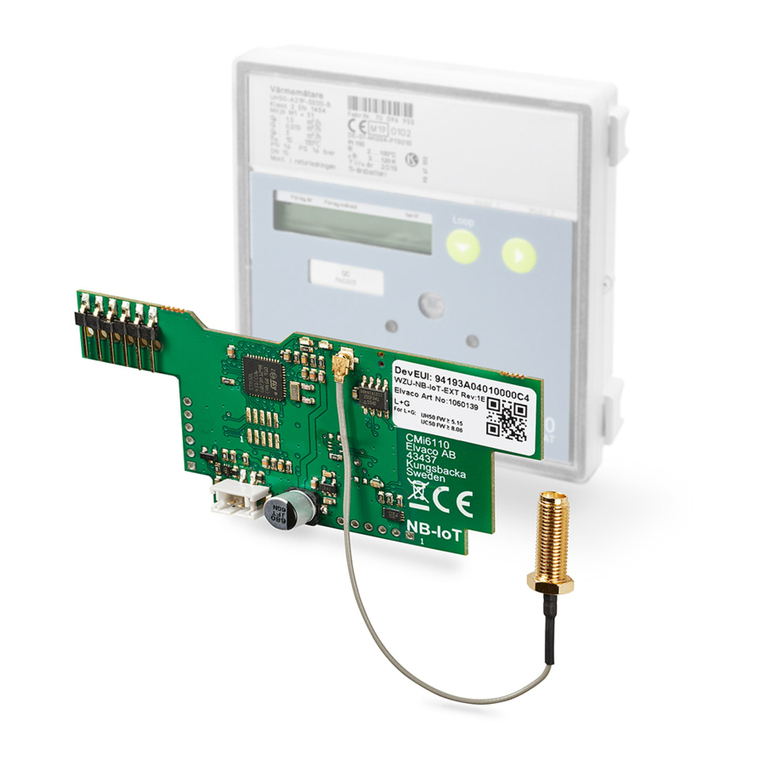beier LM-IR-16-4 V1.01 User manual

GB Infrared Light Module LM-IR-16-4
28.04.2022 BEIER-Electronic 1
Operating Instructions
Infrared
Light Module
LM-IR-16-4
V1.01
BEIER-Electronic
Winterbacher Str. 52/4, 73614 Schorndorf - Weiler
Telefon 07181/46232, Telefax 07181/45732
eMail: modellbau@beier-electronic.de
Internet: http://www.beier-electronic.de/modellbau

GB Infrared Light Module LM-IR-16-4
2 BEIER-Electronic 28.04.2022
Table of Contents
Table of Contents ....................................................................................................... 2
Description.................................................................................................................. 3
Safety advisory........................................................................................................... 4
Technical data ............................................................................................................ 4
Pin assignment........................................................................................................... 5
Wiring diagram ........................................................................................................... 6
Supply voltage connection.......................................................................................... 6
Connection of IR transmitter diode and IR receiver.................................................... 6
Connection of outputs ................................................................................................ 8
Connection of servos.................................................................................................. 9
Connection of motor ................................................................................................... 9
Connection of switch for manual motor control ........................................................ 10
Connection of data cable K-USB-2........................................................................... 10
Road train................................................................................................................. 10
Switching outputs ..................................................................................................... 11
Special light functions at outputs 13 - 16.................................................................. 12
Controlling the servo outputs.................................................................................... 13
Controlling the motor output ..................................................................................... 14
Green LED on LM-IR-16-4 ....................................................................................... 14
PC software „LM-Teacher“ ....................................................................................... 15
Using software „LM-Teacher“ ................................................................................... 16
Diagnosis.................................................................................................................. 18
Firmware update....................................................................................................... 20

GB Infrared Light Module LM-IR-16-4
28.04.2022 BEIER-Electronic 3
Description
The infrared light module LM-IR-16-4 is an expansion module for the modules
SFR-1, USM-RC-2, USM-RC-3 and UFR-1230.
The light module can be used to control lights, servos and motors on a (truck) trailer
or semitrailer. The signals are transmitted wirelessly via an infrared diode.
Connecting cables from the towing vehicle to the trailer are therefore not necessary.
A separate battery is required in the trailer or semitrailer for the supply voltage of the
light module.
The LM-IR-16-4 has 16 switching outputs for connecting the lighting (e.g. lamps and
LEDs). The light signals are passed on from the main module to the light module.
For the switching outputs 13 - 16, special functions such as a 1- and 4-channel all-
round light, a 4-channel running light and different flashing effects can be selected. A
detailed assignment of the switching outputs in combination with the various modules
can be found on page Fehler! Textmarke nicht definiert..
A motor output can be used for direct control of e.g. trailer supports, ramps or tipping
movements. An optional switch for controlling the motor output manually can be
connected to the module as well.
There are also 4 servo outputs to control (servo) movements. Applications for this
are e.g. trailer supports, the locking and unlocking of a seat post, steerable axles, or
tipping movements. Speed controllers can be connected to the servo outputs to
control additional motors.
When delivered, the light module is ready for operation with the standard settings.
With the LM-Teacher software, many settings can be adjusted and additional options
can be selected. For this purpose, the light module is connected to a Windows PC
with the data cable K-USB-2.
In order to be able to control the LM-IR-16-4 via the SFR-1, USM-RC-2 or USM-RC-
3, the light module must be activated in the sound teachers of the main modules. For
this, at least version V1.30 of the SFR-1 Sound-Teacher and version V1.80 of the
USM-RC-2 Sound-Teacher are required. Version V1.30 of the Drive-Teacher is
required for the UFR-1230.

GB Infrared Light Module LM-IR-16-4
4 BEIER-Electronic 28.04.2022
Safety advisory
•Read these operating instructions carefully before activation and keep them
on hand for future usage!
•The integrated circuits on the light module are sensitive to electrostatic
charges. You must “discharge” yourself (e.g. by touching a heater or another
grounded device) before touching any component.
•The light module should only be operated with the supply voltage specified in
the technical data.
•Wiring work may only be conducted in a non-energized state.
•Children under the age of 14 are not permitted to operate the light module.
Technical data
Supply voltage (Ub):
6 – 12 V DC
Current consumption:
Quiescent current: approx. 25mA
Switching outputs:
16 pieces (minus-switching, N-channel MOSFET),
max: 1.5 A per output, the total current of all
outputs must not exceed 3,0 A.
Light functions:
•1:1 copy of 16 outputs of SFR-1
•1:1 copy of 12 outputs of USM-RC-2
•1:1 copy of 16 outputs of USM-RC-3
•1:1 copy of 8 outputs of UFR-1230
•1- or 4-channel all-round light
•4 different flashers
•
4-channel running light
Servo outputs:
4 pieces (1,000 - 2,000 ms),
max. current consumption of servos: 1 A (short
time 4 A)
Motor output:
1 piece,
max. current consumption of motor: 2 A (short time
3 A)
Additional ports:
•IR receiver
•Switch to control motor manually
•Data cablel / IR-transmitter for a Road-Train
Permissible ambient
temperature:
0 – 60° C
Permissible relative air
humidity:
Max. 85 %
Dimensions:
58 x 44 x 17 mm
Weight:
26 g

GB Infrared Light Module LM-IR-16-4
28.04.2022 BEIER-Electronic 5
Pin assignment
Anschlüsse auf dem Lichtmodul:
X1/+
Akku + (6 – 12 V)
X1/-
Akku -
X2/+
Motor +
X2/-
Motor -
X3
Outputs 1 - 8
X4
Outputs 9 - 16
X5/1
Servo 1
X5/2
Servo 2
X5/3
Servo 3
X5/4
Servo 4
X5/5
IR receiver
X5/6
Switch to control motor manually
X5/7
Data cable K-USB-2 / IR-transmitter diode for a Road-Train

GB Infrared Light Module LM-IR-16-4
6 BEIER-Electronic 28.04.2022
Wiring diagram
M
Battery
6 - 12 V
+
-
4 A
Servo 1
Servo 2
Servo 3
Servo 4
ServoServoServoServo
Motor
(e.g. ramps,
trailer supports)
K-USB-2 Data cable /
IR send diode for road train
Motor up / down
IR-Receiver
Outputs
minus switching
brown
red
orange
yellow
green
blue
purple
grey
white / black
brown
red
orange
yellow
green
blue
purple
grey
white / black
Output 9
Output 10
Output 11
Output 12
Output 13
Output 14
Output 15
Output 16
Output 1
Output 2
Output 3
Output 4
Output 5
Output 6
Output 7
Output 8
All wiring work must be conducted while power supply is turned off!
Supply voltage connection
The LM-IR-16-4 requires a DC voltage of 6 - 12 V (e.g. a battery) for supply voltage.
This is connected to terminal X1. Please pay attention to the correct polarity!
Reverse polarity can destroy the module!
The cable cross-section for the supply voltage should be as large as possible (0.75
mm² - 1.5 mm²).
In addition, a switch for switching off the light module and a fuse with 4 A should also
be installed in the supply line (positive line).
Connection of IR transmitter diode and IR receiver
IR transmission:
The prerequisite for the function of the light module LM-IR-16-4 is a sound speed
controller SFR-1, a sound module USM-RC-2/USM-RC-3 or a speed controller UFR-
1230! Operation with other sound modules / speed controller is not possible.
With the modules USM-RC-2, USM-RC-3 and SFR-1, you can choose between two
different IR protocols (slow and fast). With the UFR-1230 there is only 1 protocol and
this is activated automatically.

GB Infrared Light Module LM-IR-16-4
28.04.2022 BEIER-Electronic 7
The distance between the IR transmitter diode and the IR receiver should not be
larger than 10 cm to ensure reliable transmission.
If the IR transmission works correctly, the green LED on the light module flashes fast
at regular intervals. If the light module does not receive any IR signals for more than
2 s, all outputs are switched off, the motor is stopped and the servos move
(depending on the setting) to the neutral position.
Connection of IR transmitter diode:
The supplied IR transmitter diode (blue, round) is supplied with a soldered cable with
a 3-pin plug.
With the SFR-1 sound speed controller, the black plug is plugged into the pin header
X5/I. The brown cable points outwards, towards the edge of the board.
With the USM-RC-2 sound module, the black plug is plugged to X9. The brown cable
points to the SD card, the orange cable in the direction of the gray terminal strip X1.
With the USM-RC-3 sound module, the black plug is plugged to X10. The brown
cable points outwards, towards the edge of the board.
With the UFR-1230 speed controller, the black plug is plugged to X6/2, the brown
cable points outwards to the edge of the board.
Connection of IR receiver:
The IR receiver (black, rectangular) is supplied with a soldered cable with a 3-pin
plug. The black plug is plugged into the pin strip X5/5 on the light module. The
orange cable points upwards.
The sensitive side of the receiver is the semicircular dome. So the
IR transmitter diode should point to it.
For easy and stable mounting of the IR receiver, we offer the KB-
IR-T king pin for Tamiya trucks with a special bracket in which the
receiver can be clamped. For the transmission of the infrared
signal, the king bolt has a continuous hole.

GB Infrared Light Module LM-IR-16-4
8 BEIER-Electronic 28.04.2022
Connection of outputs
The outputs 1 - 16 of the module are on the socket headers X3 and X4.
The ribbon cable supplied can be used to connect the outputs. For a simple
connection (without soldering) the connection terminals AKL-8 and AKL-8-W can
also be ordered from us in our shop.
Of course, other cables/plugs can also be connected to pin strips X3 and X4. A cable
cross-section of 0.14 mm² - 0.5 mm² should be used for the switching outputs.
The light module always switches the negative pole to the connected load for all
outputs. The negative pole of the load is connected to the output of the light module
(see connection diagram).
The common positive pole for outputs 1 - 8 and 9 -16 are the black and white cables
of the ribbon cable. It is also possible to connect the load directly to the positive
terminal of the battery.
Assignment of ribbon cable:
Output
Ribbon cable (X3)
1
brown
2
red
3
orange
4
yellow
5
green
6
blue
7
purple
8
grey
positive pole
white
positive pole
black
Ausgang
Ribbon cable (X4)
9
brown
10
red
11
orange
12
yellow
13
green
14
blue
15
purple
16
grey
positive pole
white
positive pole
black

GB Infrared Light Module LM-IR-16-4
28.04.2022 BEIER-Electronic 9
The switched voltage at the outputs (at 100 % brightness) is always as high as the
supply voltage of the module.
If LEDs are connected, series resistors must always be used. It does not matter
whether the series resistors are connected to the plus or minus line. The correct
polarity is important for LEDs, otherwise they do not light up.
The required series resistors for the LEDs depend on the LED colors and the LED
current. For orientation, here is a table with series resistors for standard LEDs
(current approx. 15 mA) as a rough guide:
Supply voltage
Series resistor
6 V
270 Ohm
7,2 V
330 Ohm
8,4 V
470 Ohm
9,6 V
510 Ohm
12 V
680 Ohm
There are also LED series resistor calculators on the Internet (e.g.
www.leds.de/widerstandsrechner) with which the ideal resistance can be calculated
quickly and easily.
If relays or other inductive loads (e.g. motors) are connected to the switching
outputs, free-wheeling diodes (e.g. 1N4007) must be used.
Connection of servos
4 servos or speed controllers as well as other modules that are intended for direct
connection to a receiver (e.g. relay modules, rotating beacons, etc.) can be
connected to the pin headers X5/1 - X5/4.
The orange cable points upwards.
If a speed controller is connected that has a BEC, the red wire must be removed
from the servo plug and isolated! This is necessary because the LM-IR-16-4 has its
own BEC, which is connected to the connections of the servo outputs.
The current consumption of all connected servos / modules at X5/1 - X5/4 must not
exceed 1 A (short time 4 A)! Otherwise an external BEC is necessary.
Connection of motor
A motor for e.g. trailer supports, ramps or tipping functions can be connected to
terminal X2. It is important that the current consumption of the motor does not
exceed 2 A (short time 3 A).

GB Infrared Light Module LM-IR-16-4
10 BEIER-Electronic 28.04.2022
Connection of switch for manual motor control
An optional switch LM-SW can be connected to pin strip X5/6,
with which the motor can be controlled manually. For example,
the trailer supports can be moved without remote control. The
speed of the motor in manual mode is set in the LM-Teacher.
Connection of data cable K-USB-2
The data cable K-USB-2 is connected to the pin header X5/7. The orange cable
points upwards.
The light module is not supplied with voltage via the data cable. If the data cable is to
be used, the LM-IR-16-4 must be supplied with voltage via the battery (as normal).
The data cable is used to transfer and read out the settings of the light module. The
diagnosis can be used to check functions and search for errors. The data cable is
also required for a firmware update.
Road train
An IR transmitter diode can also be connected to pin header X5/7, which then
forwards the received IR signal 1: 1 to another light module. In this way, a road train
can be implemented with several trailers.
Simultaneous operation of the data cable and the IR transmitter diode at X5/7 is not
possible! However, it can be plugged between the data cable and the IR transmitter
diode at any time.
All light modules of the road train always receive the same light signals for the 16
switching outputs. The signals for the 4 servo outputs and the motor output are also
initially identical for all light modules. Using the functions “LM: Activate road train ID
1” - “LM: Activate road train ID 7” on the towing vehicle, however, the servo outputs
and the motor output can be controlled very specifically with just one light module.
The road train ID can be set in the LM-Teacher (see page 17)
If, for example, the "LM: Activate road train ID 2" function is switched on via the
towing vehicle, the commands for the servo outputs and the motor output only affect
the light module that has ID 2. With all other light modules, the servo outputs and
motor outputs remain in the last state.
If no ID is selected on the towing vehicle, the commands for the servos and the
motor output are always carried out by all light modules. This is always the initial
state after switching on.

GB Infrared Light Module LM-IR-16-4
28.04.2022 BEIER-Electronic 11
Switching outputs
The outputs are usually copies (forwarded signals) of the outputs of the module that
sends the IR signals to the LM-IR-16-4. This means that whenever an output is
activated on the SFR-1, USM-RC-2 or UFR-1230, the output with the same number
on the LM-IR-16-4 also switches with the same intensity.
Example:
Output 4 is configured on the sound module as "indicator right". When the right turn
signal is switched on, output 4 on the sound module (indicator signal for the truck)
and output 4 on the light module (indicator signal for the trailer) at the same time.
The brightness of the output of both modules corresponds to the settings in the
Sound-Teacher.
Control via sound speed controller SFR-1:
The outputs 1 - 16 of the LM-IR-16-4 are 1: 1 copies of the outputs 1 - 16 of the
SFR-1.
Control via sound module USM-RC-2:
The outputs 1 - 12 of the LM-IR-16-4 are 1: 1 copies of the outputs 1 - 12 of the
USM-RC-2.
If servo outputs 1 and 2 are activated on the USM-RC-2, outputs 11 and 12 on the
sound module cannot be used. However, these two outputs can still be used on the
LM-IR-16-4.
The outputs 13 - 16 can only be used for the special functions “all-round light”,
“flashing light” and “running light”.
Control via sound module USM-RC-3:
The outputs 1 - 16 of the LM-IR-16-4 are 1: 1 copies of the outputs 1 - 16 of the
USM-RC-3.
Control via speed controller UFR-1230:
Outputs 1 - 8 of the LM-IR-16-4 are 1: 1 copies of outputs 1 - 8 of the UFR-1230.
The outputs 9 - 16 can be switched separately here.

GB Infrared Light Module LM-IR-16-4
12 BEIER-Electronic 28.04.2022
Special light functions at outputs 13 - 16
The 4 outputs 13-16 have special light functions:
• Rotating beacon (1x4-channel or 4x1-channel)
• Indicator / flashing effects
• Running light (4-channel)
The special light functions are permanently assigned to these outputs and cannot be
used for other outputs.
If the special light functions are to be used on outputs 13 - 16, these must be
activated in the LM-Teacher (see page 17).
There are different variants for the rotating beacon and the running light, which can
be set with the LM-Teacher software (see page 17).
The speed of the special light functions can also be set with the LM-Teacher.
1-channel rotating beacon (4 pieces)
This function simulates a rotating rotating beacon with one output. Of course, the
light cannot really rotate, so the effect is achieved by constantly increasing and
decreasing the brightness. This creates the impression of a rotating light (from the
distance).
There are in total 4 of the 1-channel rotating beacons at the outputs 13-16. The
speeds of the 4 rotating beacon are intentionally slightly different. So they are not
running in sync.
The speed of the 1-channel rotating beacon can be adjusted with the LM-Teacher.
4-channel rotating beacon (1 piece)
The 4-channel rotating beacon is an improved version of the 1-channel all-round
light. Here a rotating rotating beacon is simulated with 4 outputs. Of course, the 4
connected lamps/LEDs do not really rotate, but here too the effect is achieved by
increasing and decreasing the brightness of the 4 outputs.
The speed of the 4-channel rotating beacon can be adjusted with the LM-Teacher.
Flasher/indicators (4 pieces)
If the flasher are activated, the outputs 13 - 16 flash in different rhythms. These 4
outputs are always activated at the same time. A combination of these outputs can
create interesting effects (e.g. modern police flashing lights with 3 LEDs at outputs
13, 14 and 15).
Output 13:
Short lightning pulse
Output 14:
Short lightning double pulse
Output 15:
Short double lightning pulse, slightly offset in time to output 14.
Output 16:
Indicator
The speed of the flashers / blinkers can be set with the LM-Teacher

GB Infrared Light Module LM-IR-16-4
28.04.2022 BEIER-Electronic 13
Running light (4-channel)
A 4-channel running light can be generated via the 4 outputs 13 - 16.
As an option it can be choosen whether the running light only runs in one direction or
always back and forth (Knight Rider).
The speed of the running light can be adjusted with the LM-Teacher
Activation of special light functions
The 4 special light functions can be activated via the free function assignment in the
Sound-Teacher or Drive-Teacher, via the proportional channels, the Nautic mode,
the EKMFA mode or the switching inputs.
The functions are called in the Sound-Teacher:
•LM: Rotating beacon
•LM: Flasher
•LM: Running light
Controlling the servo outputs
Four servos or speed controllers can be connected to the light module. All 4 servo
outputs can be controlled separately from each other.
In case of an interruption of the IR signal, it can be set whether the servos should
move to neutral position (middle), or keep the last position.
For each servo output, a basic position and two additional servo positions can be
specified in the Sound-/Drive-Teacher. The speed of movement can also be set in
the Sound-Teacher.
The programmed positions can be activated via the free function assignment in the
Sound-/Drive-Teacher, via the proportional channels, the nautic mode, the EKMFA
mode or the switching inputs.
The functions are called:
•LM: Servo 1 Position 1
•LM: Servo 1 Position 2
•LM: Servo 2 Position 1
•LM: Servo 2 Position 2
•LM: Servo 3 Position 1
•LM: Servo 3 Position 2
•LM: Servo 4 Position 1
•LM: Servo 4 Position 2
Direct, proportional servo control via a prop. channel is also possible.
More information of the servo functions can be found in the operating manuals for
the SFR-1, USM-RC-2, USM-RC-3 or UFR-1230 modules.

GB Infrared Light Module LM-IR-16-4
14 BEIER-Electronic 28.04.2022
If, for example, the trailer supports are controlled via a speed controller, a
interference suppression of the IR receiver and the motor cables is important. This
can be done with ferrit rings (available in our shop).
Controlling the motor output
One motor can be connected directly to the light module (without an additional speed
controller).
The motor can be controlled with the functions "LM: Motor up" and "LM: Motor down"
with a fixed (but definable) speed.
With the modules SFR-1, USM-RC-2 and USM-RC-3, the motor can also be
controlled completely proportionally via a prop. channel. Unfortunately, this is not
possible with the UFR-1230.
Optionally, the motor can also be controlled manually using a switch on pin strip
X5/6. The speed is set in the LM-Teacher. The standard speed is 40%. With a
supply voltage of 7.2 V, this corresponds to a motor voltage of approx. 3 V, which is
a suitable voltage for many trailer supports.
Green LED on LM-IR-16-4
The green LED on the LM-IR-16-4 indicates different states of the module:
LED
State
Steady light
No IR connection
Flashing regularly
IR reception is ok
3 x flashing, then 3 s pause
Overcurrent at switching outputs
4 x flashing, then 3 s pause
Motor output overcurrent

GB Infrared Light Module LM-IR-16-4
28.04.2022 BEIER-Electronic 15
PC software „LM-Teacher“
With the software "LM-Teacher" extended options of the light module can be
configured.
The software can be downloaded for free from our website.
The light module is ready for operation in the delivery state. The use of this software
is therefore not absolutely necessary! The data cable K-USB-2 and the LM-Teacher
are only required if the extended settings are to be changed.
System requirements
•Windows compatible PC
•Windows 2000, NT, XP, Vista, Windows 7, Windows 8 or Windows 10
•approx. 5 MB of free HD space
•free USB port (1.0, 1.1, 2.0 or 3.0)
Software installation
After downloading the software, it must be installed on the PC. To do this, start the
downloaded file and simply follow the instructions of the installation program. To start
the program easily create a desktop icon.

GB Infrared Light Module LM-IR-16-4
16 BEIER-Electronic 28.04.2022
Using software „LM-Teacher“
Menue
File
Create new project
Creates a new project
Open project
Opens an existing project
Save project
Saves the current project
Save project as
Saves a copy of the current project with
a new name
Check automatically for
updates
When starting the LM-Teacher, it will be
checked if a new version is available
Check now manually for
updates
Checks if a new version is available
Close
Exit the LM-Teacher
Data cable
Upload configuration to
light module
Transfer of all LM-Teacher settings to
light module
Download configuration
of light module
Download of all settings from light
module to LM-Teacher
Language
German
Switches to German language
English
Switches to English language
French
Switches to French language
Dutch
Switches to Dutch language
Help
Operating manual
Opens this manual (PDF)
Info
Shows informations about the software
Functions
There are three areas in the LM-Teacher:
•Configuration
•Diagnosis
•Firmware update

GB Infrared Light Module LM-IR-16-4
28.04.2022 BEIER-Electronic 17
Configuration – Light module
The settings in the picture show to the delivery status.
General
An ID from 1 to 7 can be assigned to each light module. With a road train, the servo
outputs and the motor output can be controlled with just one module using this ID. If
no road train is implemented, the ID is irrelevant.
Engine output
If the motor output is controlled via the manual switch at X5/6, the speed can be set
here. 100% corresponds to the maximum speed (voltage for motor = supply voltage
of the LM-IR-16-4).
If the motor should run more slowly, the speed can be reduced here. For a voltage of
approx. 3 V at the motor, a speed of approx. 40% is required with a 7.2 V battery.
Servo outputs
In case there is no IR connection you can choose in this box whether the servo
outputs should move to neutral position (center) or hold their last position.

GB Infrared Light Module LM-IR-16-4
18 BEIER-Electronic 28.04.2022
All-round / flashing / running lights(Outputs 13 – 16)
If outputs 13 - 16 are to be used for the special light functions, this must be activated
here.
There are two options for the all-round light, either 4 x 1-channel or 1 x 4-channel.
For the running light you can choose between a normal (runs in one direction only)
and a Knight Rider running light (runs back and forth).
The speed for all three special lights can be adjusted in 10 steps.
Bluetooth Light module LM-BT-16-4
With the Bluetooth version LM-BT-16-4 of the light module, a few more options can
be set here. These settings have no function for the infrared version LM-IR-16-4.
Diagnosis
A diagnostic function is integrated in the LM-Teacher. This feature is very helpful to
check the various functions of the light module. The data cable
K-USB-2 must be connected to X5/7 at the light module.
The diagnosis window is divided into different areas: servo outputs, motor,
miscellaneous, outputs, inputs and data.

GB Infrared Light Module LM-IR-16-4
28.04.2022 BEIER-Electronic 19
The following explains what is displayed in the different areas:
Servo outputs
The current positions of the 4 servo outputs are displayed here.
Engine
Some values of the motor output stage are displayed in this area. These are mainly
used for internal testing purposes.
Miscellaneous
The values displayed here are primarily for internal testing.
Outputs
The 16 switching outputs of the light module are displayed here. If an output is
switched on, this is marked by a green circle.
If "test" is activated, all 16 outputs are briefly switched on as a running light. With
this, e.g. the wiring of the outputs can be tested (on the fly) without a transmitter.
Inputs
The inputs for manual motor operation and the input of the IR receiver are shown
here. If the IR reception is correct, the display in the diagnosis only flickers
irregularly.
Data
The values displayed here are mainly intended for internal testing purposes.
Diagnostic recording
A diagnosis can be recorded in a file on the hard disk. The light module must always
be connected with the data cable during recording.

GB Infrared Light Module LM-IR-16-4
20 BEIER-Electronic 28.04.2022
Firmware update
The right firmware for the light module is always integrated in the LM-Teacher. If
there is an update for the LM-Teacher, a new firmware for the light module is always
loaded.
The firmware update can either be started manually or the LM-Teacher receives an
automatic notification as soon as new firmware is available.
The update takes about 6 seconds. The green LED flickers during the update
process.
Never disconnect the module from power supply while updating!
Disposal note:
Discarded electrical and electronic equipment contains a multitude of valuable
resources, including precious metals and critical raw materials. Achieving a high
collection and recycling rate and the associated return of these raw materials into the
production cycle is one of the central goals of the environmentally friendly and
sustainable disposal of electrical and electronic equipment.
For this reason, our modules must not be disposed of with normal household waste,
but must be collected separately. The communal collection points, such as recycling
centers, can be used for this. Larger dealers also offer take-back points that can be
used even if the product was not purchased there. We are happy to take over the
professional and free disposal. To do this, send the module back to us with sufficient
postage (!!!).
Table of contents
Other beier Control Unit manuals
